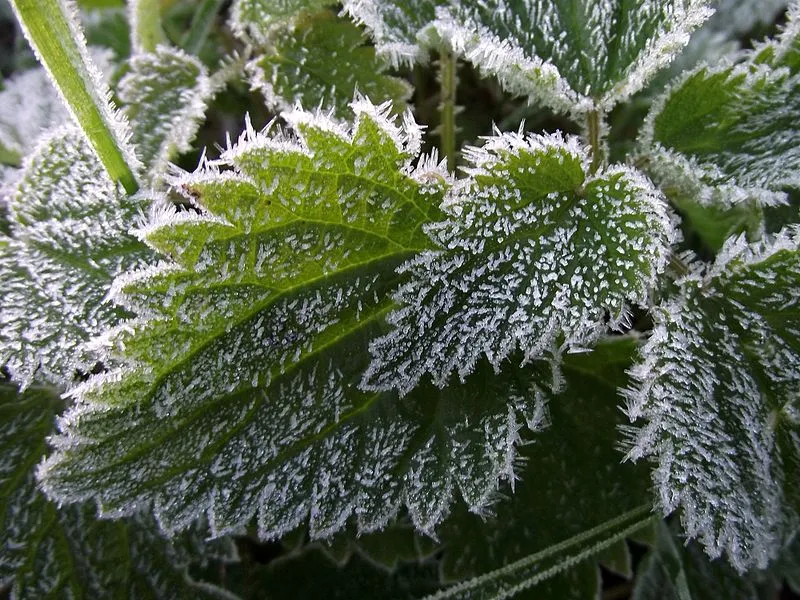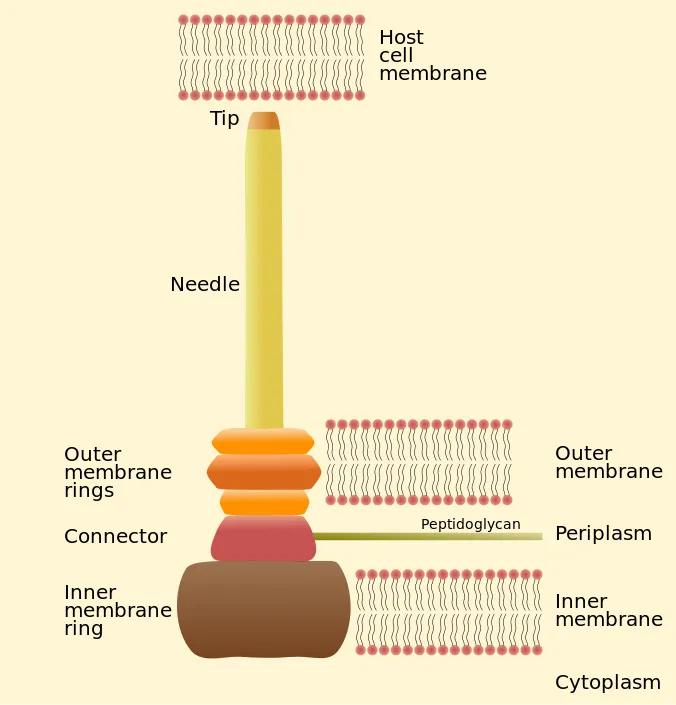In some ways, the history of civilization is the history of being clever with our food supply. As soon as we figured out how to get more food than we immediately needed, we started thinking up ways to preserve that food. Essentially, we entered into a race with microbes to see who got to eat the excess. We've known for centuries that low temperatures preserves food and the advent of reliable refrigeration changed everything. We must've felt pretty clever, but, we didn't know then about Pseudomonas syringae, the Mr. Freeze of Microbes, who has been using the cold to get food for millennia, if not longer.

Feeding strategy
P. syringae is a member of one of my favorite genera, the pseudomonads. This is a pretty large genera and these guys are notorious for being highly adaptable and able to degrade an amazing amount of things, including some stuff we think of as disinfectants. P syringae isn't so fancy, it just wants to eat plants. But it has a problem - it is on the outside of the plant, so there's an annoying plant cell wall standing between it and all those yummy plant nutrients. Here is where P. syringae gets really cool - it manipulates the freezing temperature of water to burst open the plant's cells.
The best image of P. syringae entering a plant I could find is not available for reuse. It was orginally by James Kremer and Sheng Yang He of the Howard Hughes Medical Institute, and can be seen in this Pop. Sci. Article
Discovery
In fact, it is this strategy which lead to its discovery. Basically, Dr. Hoppe and his grad student (Paul Lindow), were studying corn fungus by grinding up infected plants, spraying new crops, and seeing what happened. During one frost, it became apparent that only those plants treated with infected material developed frost damage. From there, Lindow determined that P. syringae was the culprit.

How does it work
Supercooled water
So, how does P. syringae pull off this feat of making ice? Well, the first thing you need to know is that the freezing point of water is 0°C, except when it isn't. In fact, under the right conditions, water can be liquid down to -40°C. We call water in that state supercooled. The conditions for the very lowest temperatures are very specific, but supercooled water at higher temperatures is not uncommon - in fact, this is how many plants survive the winter. What P. syringae does is alter those conditions so that the water can no longer be supercooled, and ice forms, breaking open the cell and allowing P. syringae to feed on all those yummy plant guts.
Ice nucleation active (INA) proteins
These proteins are the secret sauce used by P. syringae and they work by inducing water molecules to line up in a certain way. You may remember, water ice is highly ordered, and, speaking very loosely, the greater the amount of "order" in cold water, the more likely it is to freeze. The INA proteins organize the water nearby, which quickly ropes nearby liquid water molecules into lining up, and so on, until ice forms. There is a nice illustration of this starting around the 20s point of this video (not my own).
Interestingly enough, these proteins are very closely related to antifreeze proteins, which are used by various organisms to prevent water from freezing.
Type III Secretion System
All well and good, we know what P. syringae is, its overall strategy, and even how the protein payload it uses works. But how does it deliver that payload to where it's most useful? As you might have guessed from the name, it injects the proteins into the cells using a special kind of bacterial syringe, the type III secretion system. This system is really complex, really cool, and very useful - we find it in all sorts of Gram negative bacteria. What you need to know here though is that it's basically a biological hypodermic needle.

Ecological implications
Ecologically, P syringae was originally looked at because of its clear affect on plant growth, particularly its role in agricultural damage. It's quite cosmopolitan (which means it's widespread, not that it has atrocious fashion sense), but interestingly, it appears that there are multiple substrains (pathovars) specific to certain plants.
More recently, we've become aware of a much more widespread and fundamental role for P syringae. The INA proteins it uses to to burst cell walls really don't care whether or not they're in a cell, and we've suspected for a while that they may help ice and rain form. It turns out that P. syringae may be one of the fundamental sources of nucleation for rain and snow, making it one of the most important biological organisms responsible for the water cycle, right up there with plants and transpiration.
Biotechnology implications
Snow and water production
Both P. syringae and purified INA proteins have been used for bioprecipitation and can cause on-demand snow and rain. Perhaps the most famous instance was when it was used to ensure snow for the Winter Olympics in both Sochi and Vancouver
There is a nice youtube video (not my own) which explains this
Crop preservation
This bug, which normally kills crops, also has a lot of potential to save them. There exists a mutant strain, cleverly named ice-minus which does not produce the INA protein. The idea is that if you spray a crop with an abundance of the ice-minus strain, then the wildtype ice-positive strains of P syringae will not be able to get a foothold in the crop. Ecologically, this is a great example of what we call competitive antagonism. A similar (but not quite the same) strategy has been employed to great effect in eradicating the screwworm from North America. It's also similar to what we're proposing to do with gene drive mosquitoes to help combat insect-borne disease.
GMO Controversy
Although an early success for genetic engineering, the application of ice-minus bacteria was fraught with controversy, and set the stage for debates and ill-feeling on both sides, which continue to this day, such as in the debate to release the gene drive mosquitoes I mentioned earlier.
Conclusion
I hope you've enjoyed this look at what you may think to be a really cool microbe. One of the things that has kept me fascinated with bugs for decades is that there is no lack of weird little unique survival strategies that only get more and more interesting the more you read about.